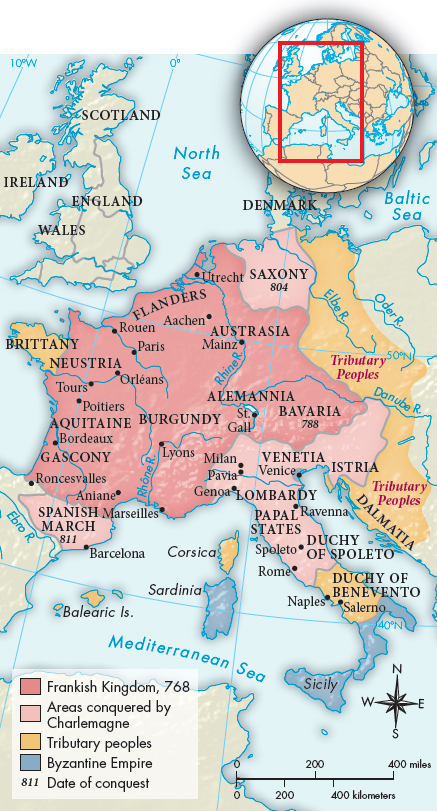Understanding Western Society
Printed Page 221
The Warrior-Ruler Charlemagne
Charlemagne’s adviser and friend Alcuin (ca. 735–

If an ideal king was “strong against his enemies” and “feared by pagans,” Charlemagne more than met the standard. His reign was characterized by constant warfare. He subdued all of the north of modern France, but his greatest successes were in today’s Germany, where he fought battles he justified as spreading Christianity to pagan peoples. In the course of a bloody thirty-
Charlemagne also achieved spectacular results in the south, incorporating Lombardy into the Frankish kingdom. He ended Bavarian independence and defeated the nomadic Avars, opening eastern Germany for later settlement by Franks. He successfully fought the Byzantine Empire for Venetia, Istria, and Dalmatia and temporarily annexed those areas to his kingdom. By around 805, the Frankish kingdom included all of northwestern Europe except Scandinavia and Britain (Map 8.2).